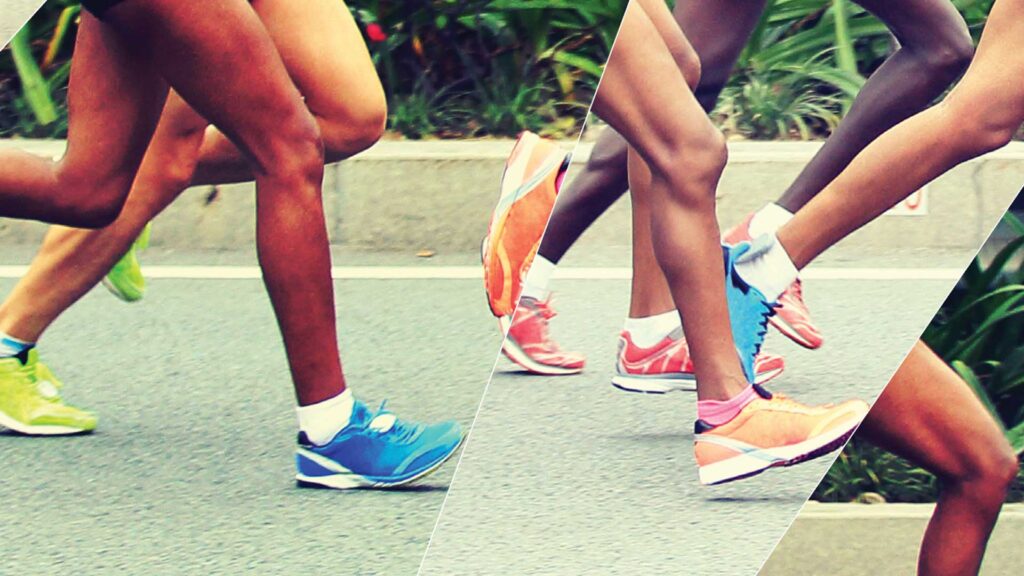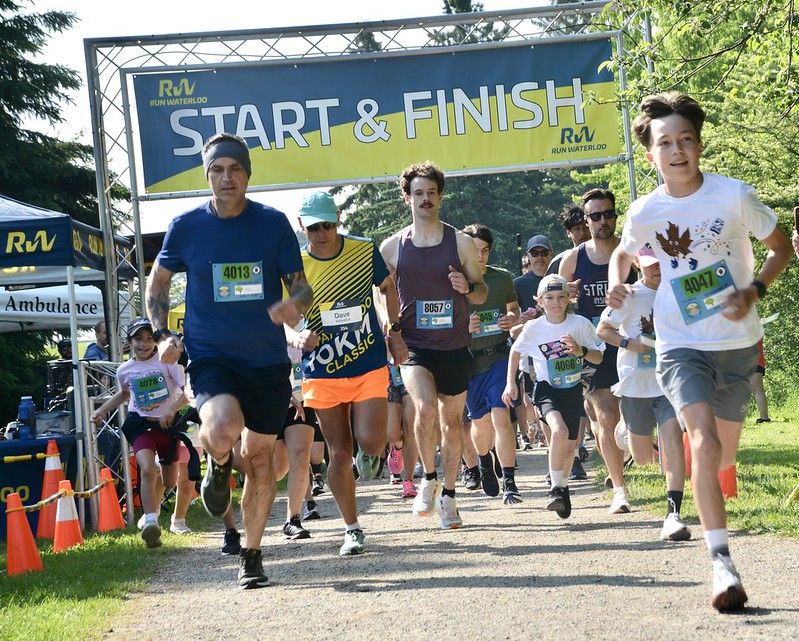‘THE BIG 3’ EXERCISES FOR YOUR CORE
The ‘core’ is comprised of a number of muscles working together to achieve and maintain a stable spine. Having a solid core is extremely important for runners! A strong core and a core with great endurance (most importantly) allow us to move our hips, legs, and arms with ease and with proper mechanics in order to avoid injury! Our ‘core’ muscles include: rectus abdominis, internal and external oblique, transversus abdominis, quadratus lumborum, and the gluteals.  Our goal when working on our core is not only to increase strength, but also to improve our endurance in order to maintain a stable spine throughout a variety of activities. With the goal of a stable spine for our limbs to work from in mind, it is important to choose core exercises that do not put unnecessary stress and strain through the low back. For this reason, I will not recommend crunches or sit-ups. These exercises involve repetitive flexion of the low back and impart far too much strain through the discs and joints of the lumbar spine. Here are 3 exercises for the core developed by Dr. Stuart McGill, that will increase your endurance and protect your back: modified curl-up, side bridge, and bird dog, collectively known as ‘the big three’.
Our goal when working on our core is not only to increase strength, but also to improve our endurance in order to maintain a stable spine throughout a variety of activities. With the goal of a stable spine for our limbs to work from in mind, it is important to choose core exercises that do not put unnecessary stress and strain through the low back. For this reason, I will not recommend crunches or sit-ups. These exercises involve repetitive flexion of the low back and impart far too much strain through the discs and joints of the lumbar spine. Here are 3 exercises for the core developed by Dr. Stuart McGill, that will increase your endurance and protect your back: modified curl-up, side bridge, and bird dog, collectively known as ‘the big three’.
1. Modified Curl-Up
Lie your back with one knee bent and one knee straight, this puts your pelvis in a neutral position and the muscles of your core in an optimal alignment of pull to avoid strain on the low back. Place your hands under the arch of your low back and ensure that this arch is maintained throughout the curl-up. Start by bracing your abdomen; this is different from flexing your abs, bear down through your belly. Now make sure you can take a breath in and a breath out while maintaining this brace. If you cannot, stop there and practice doing just that until you’ve got it mastered! Now, pretend that your spine in your neck and your upper back are cemented together and do not move independently. Pick a spot on the ceiling and focus your gaze there, lift your shoulder blades about 30° off the floor and slowly return to the start position. Take note of your neck, and ensure that your chin isn’t poking forward when you do a curl up. If you’re struggling with that, focus on making a double chin. Perform 3 sets of 10-12.
2. Side Bridge
Lie on your side and prop yourself up on your elbow. Ensure that your elbow is directly under your shoulder to avoid any unnecessary strain through your shoulder joint. With your legs straight, place your top foot on the ground in front of your bottom foot. Place your top hand on your bottom shoulder. While maintaining the natural curve of your spine, that is to say, be sure that your upper body isn’t twisted or leaning forward, brace your abdomen, squeeze through your gluteals (clench your bum), and lift your hips up off the ground. Don’t forget to breathe! Hold for 8-10 seconds, repeat 3 times. As the exercise becomes easier, increase the number of repetitions as opposed to the length of time. There are a number of ways to modify this exercise in order to increase or decrease the difficulty such as the example below on the right. If it’s not challenging enough, try putting that top hand on your top hip, or straight up in the air, but again, be sure your body stays straight!
3. Bird Dog
Start on your hands and knees with your hands shoulder width apart directly under your shoulders, and knees hip width apart directly under your hips. Maintain a neutral spine. Brace through your abdomen and squeeze your gluteals. Ensure you can maintain this while you take a breath in and out. Lift your right arm in front until it’s level with your shoulder, squeezing the muscles between your shoulder blades as you do so. At the same time, extend your left leg straight back until it is level with your hips, squeezing your gluteals, and keeping your hips square to the floor. Return to the starting position in a slow and controlled manner, and perform the same action with the left arm and right leg. That is one repetition. Perform 3 sets of 8-10 repetitions. As this exercise becomes easy, focus on co-contracting the muscles of your forearm and arms while you extend, the same goes for the muscles of your legs. For an additional challenge, instead of putting your hand and knee back down on the ground between reps, try just sweeping the floor and performing the next rep right away, or draw a square with your arm and leg and then sweep the floor.
These are just a small selection of spine safe core exercises. There are plenty of others out there to curb your boredom and keep you interested! As always, if you have any questions, don’t hesitate to ask!
Dr. Julia Callaghan, BSc (Hons), DC, ART®,
CSCS, Contemporary Medical Acupuncture
McGill, S. (2002). Low Back Disorders: Evidence Based Prevention and Rehabilitation. (2nd Ed).
Dr. Julia is a chiropractor at kw health connection and a regular contributor to the RunWaterloo blog.












